Cuba - December 16th - December 20th, 2016
"The only thing on here is a $1200 sailboat..." the chair of the SG finance committee did a double-take as he reviewed the club's annual budget request. In past years, we had requested ropes, tents, backpacks, and spray skirts, but we figured we could stretch our existing resources a bit and put all our funds into one all-important purchase. "Can you even get a functional sailboat for $1200?" We made all manner of assurances that we could, that we had done copious amounts of research on this point. In truth, we had found a couple boats for this price moored in Crystal River, but each was missing some critical component like an engine or sails. It was questionable whether any of these would be viable for their intended purpose.
"Where are you planning on sailing?" We detailed plans for taking the boat on day outings to Wauburg and Orange Lake. How we were to accomplish this was a tad nebulous since we had not budgeted for a trailer, which would undoubtedly cost more than our bargain-basement vessel. It was a moot point, since the finance committee had already guessed at our true motive.
Traveling to Cuba was once an onerous and expensive feat. You had to book a ticket from Florida to Cancun, which was rarely less than $250. But then, once in the Cancun airport, you had to walk up to the Air Cubana counter and pay in cash the current asking price for a roundtrip ticket to Havana, which was usually somewhere between three and four hundred bucks. If you managed to get a ticket at all, you had then spent over $600 to reach a city that lay a mere 70 miles from Key West.
And then there was the illegality of it all. Would you get an exit stamp in Cuba, or a second entry stamp to Cancun? Would US immigration notice this discrepancy and slap you with a $6000 fine? Some friends had once ducked out of the Montego Bay immigration line and run out of the terminal to avoid a second entry stamp. I could hardly write this up as a repeatable procedure.
The solution was a boat. It might be moored on the southern end of the state and could then be stealthily deployed at a moment's notice for an easy overnight cruise to the forbidden isle. We had undergone lengthy negotiations with certain friends around the topic of borrowing their parents' boats. But these had all come to naught. This budget hearing was our last chance at realizing our dream of a $100 trip to Cuba.
"Submit a new budget and we'll have a second hearing next month," the chair delivered his verdict. Our request for a boat was denied and we were sent home to draft a routine list of camping and climbing gear. As long as the nonsensical regulations remained in place, we had little chance of convincing random college students to venture to this quintessentially close-yet-far-away land.
Fast-forward five years and the Obama administration was finally making strides towards changing the Cuban travel landscape. You could now elect one justification from a fairly comprehensive list of twelve motives for your trip, check a box, buy a $50 visa at the check-in counter, and take a direct one-hour flight from a Miami-area airport. An overly aggressive bidding process had led airlines to overcommit on routes, and many were now forced to sell seats for pennies above taxes just to have a shot at half-filling their planes. The time was ripe to lead scores of adventure travelers to enjoy the many wonders of the island, spending US dollars in support of the Cuban people. Many were still hesitant, so I took advantage of a family meetup in Miami to jog down and prove that one might go and come back again, little the worse for wear...
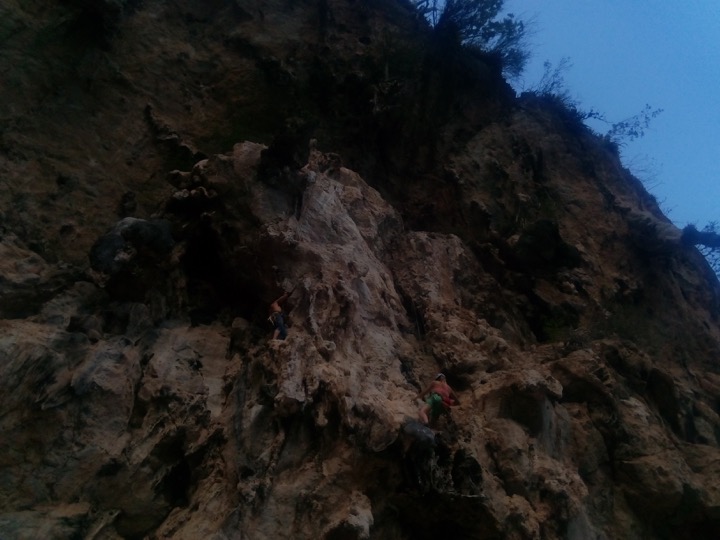 |
| World-class tufa climbing |
As good as gold - everywhere else
In recent years, free ATMs have become ubiquitous throughout the developing world, but occasionally the need to exchange money does arise, and in these instances, I find it's best to conduct such transactions in the sketchiest way possible. And this is how I came to be in the janitor's closet of the Havana airport with three Cuban women, thumbing through my prodigious pile of $20 bills.
Cuba has plenty of ATMs, but none will accept an American card. If you don't have an avenue for opening a foreign account, your only option is to carry down hundreds of dollars in cash. While "I'm an American" translates to "I have lots of money" in most of the world, in Cuba, it can be interpreted more precisely as "I have an unreasonable amount of hard currency, on my person, right now."
To stick it to America, who quite deserves it, the government levies a 10% fine on all American bills. So while the convertible peso is pinned 1:1 to the dollar, the absolute best you can do through legal channels is 90 CUC cents for each greenback. On top of that, very few people seem to have any interest in exchanging dollars, and so it's often necessary to incur a hefty exchange fee or wait in a formidable line. And that brings us back to the janitor's closet. The currency exchange at the airport, perhaps one of the few counters in the country without an hour-long wait, charges a 5% commission, but the closet next door offers a full 90 CUC for very $100, with a $100 minimum.
And here we arrive at another wrinkle in the system. Cuba has two currencies. One is designed for locals and provides access to 4-cent bus rides, 12-cent milkshakes and $1 plates of ropa vieja. The other was created for tourists and gives you the opportunity to spend 10-50 times as much for all of your purchases. While it's no longer illegal for tourists to spend the local currency, getting a hold of it is never particularly easy. I bring this up because the two currencies, though distinguished by a 25:1 exchange rate, are almost entirely identical. And it would be a simple matter for a foreigner, fresh off a plane, to accept 90 pesos that actually only amounted to $3.50. And while I opted to only exchange $40 at the official counter, I imagine that this might very well be the outcome for an unsuspecting American who decides to go with the closet route.
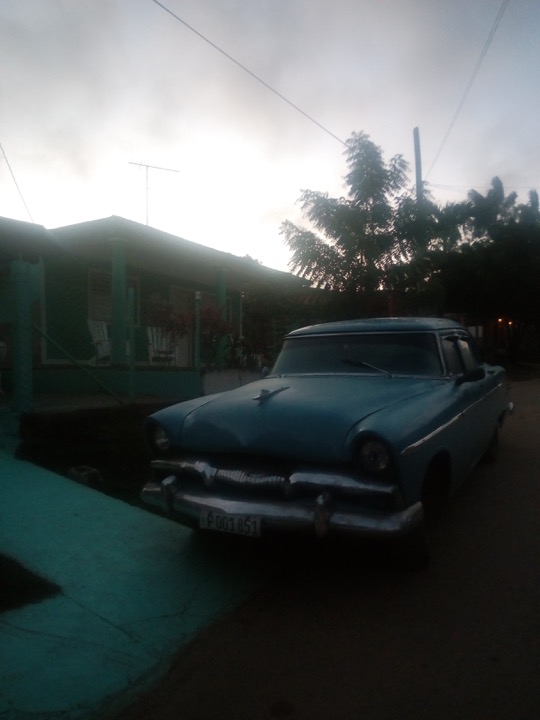 |
| Typical taxi |
 |
| A few of the 300 or so homestays in town |
Rabies
June 17th - that is the day I would die. The virus would quietly move about my body for six months, then erupt in my brain in spectacular fashion. I would rapidly lose my mind, and my life shortly thereafter, perhaps before the doctors could even divine the cause of my abrupt mystery illness. And it had all been due to a poorly-trained pet that roved alongside a pack in the environs of a small tourist restaurant along a well-trafficked trail in a scenic valley near Vinales.
There are many disadvantaged and disenfranchised demographics in the world. Most receive some measure of support through social media campaigns and liberal legislation. But there is one group despised by conservatives and liberals alike, and adherents to their worldview must communicate in secret, lest they incur persecution that may be delivered with complete impunity, even moral righteousness. These are the non-dog-lovers. They might tolerate, even intermittently enjoy the company of the friendlier members of the species. But they're perturbed and confused by the measures most humans will take to endure the burden of these illogical beasts. And when they are subjected on a long car ride to the slobber or anal secretions of a non-paying trip member, or their dinner is devoured when they leave the car for a bathroom break, they might question their place in the animal hierarchy. And when they fear for their life and shell out $1500 for an aggressive barrage of injections, because a dangerous beast was allowed to roam free on a public thoroughfare, with no attention from authorities or neighbors, they may just wonder if the whole world hasn't gone mad around them.
If there's one piece of Cuban propaganda that has managed to squeeze through America's embargo, it's the tales of their glorious healthcare system. After every humanitarian disaster, Castro offers to speedily deliver legions of highly trained doctors to the far corners of the earth. When considering these offers in the context of the relatively meager population, one might imagine that if anything were to befall you whilst on the island nation, qualified doctors would be tripping over themselves to come to your aid. This is the image I had in mind when I walked into the university clinic on the north side of Vinales.
I found a doctor in a t-shirt and jeans lazily slouched in a chair next to the door of the clinic. He directed me to a nurse who spoke English and she led me over to another room to clean and dress my wound. An hour or two later, my situation was translated to the doctor, he scribbled something about a dog bite, and I was handed a bill including $30 for a consultation and $5 for bandages. I waited a few more hours for the epidemiologist to show up and explained the dog encounter to her; she promised to go with a horse guide to assess the dog and determine if vaccinations were needed, but it would have to wait until morning. After lunch the following day, the epidemiologist arrived at my homestay and reiterated what I had told her in our previous meeting - that the dog was one of a large pack and it was quite impossible to determine which had bit me, and precautionary vaccinations would therefore be required. Returning to the clinic, I waited another few hours while the nurses and doctor printed out a wikipedia page on how to treat rabies, then went to the pharmacy to get the first shot. They wrote up a letter of explanation that I could present back in the States to get the remaining five shots.
The government of Cuba had funded my first vaccination, but the rest would be entirely on me. The cheapest in Pittsburgh, where I found myself on the third day after the bite, was $243. Fortunately, I had received several free prophylactic vaccinations from the Peace Corps and this would be the extent of my post-exposure treatment.
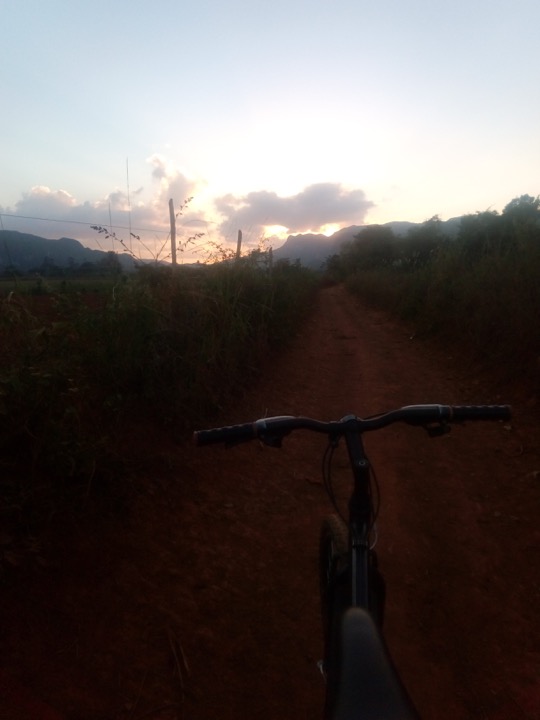 |
| Riding around Vinales |
 |
| A steel girder makes for an interesting river crossing on a bike |
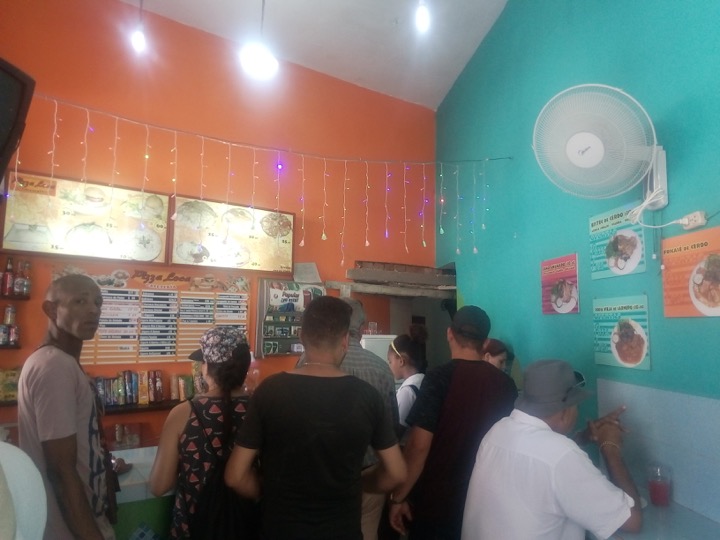 |
| The local diner |
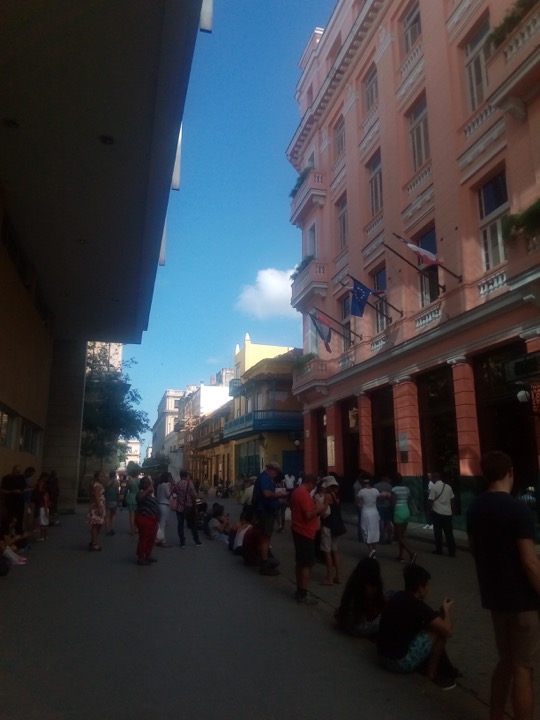 |
| One of the few WiFi hotspots |
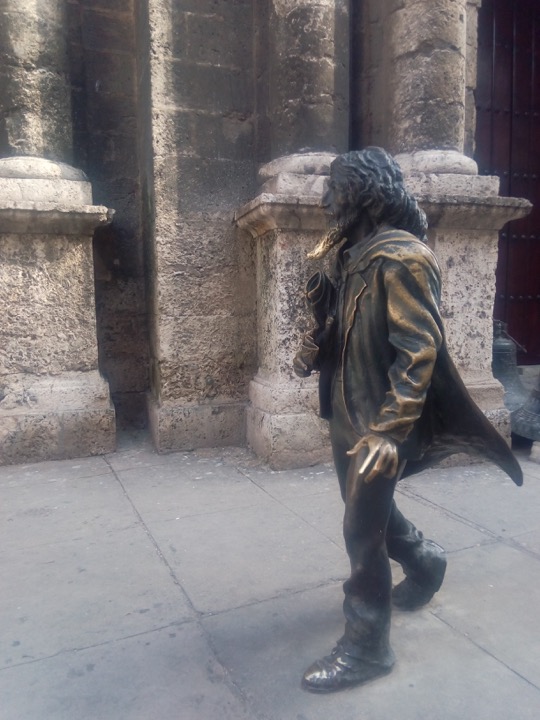 |
| You can rub his beard for luck |
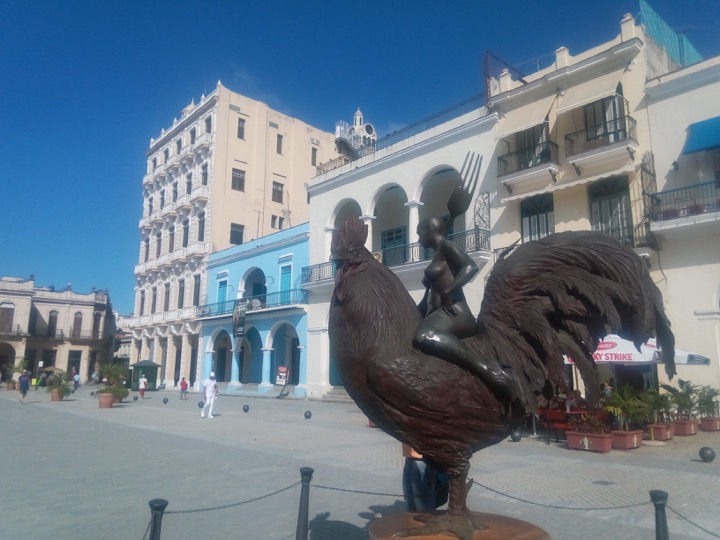 |
| Topless bald girl in heels, riding a rooster, wielding a fork |
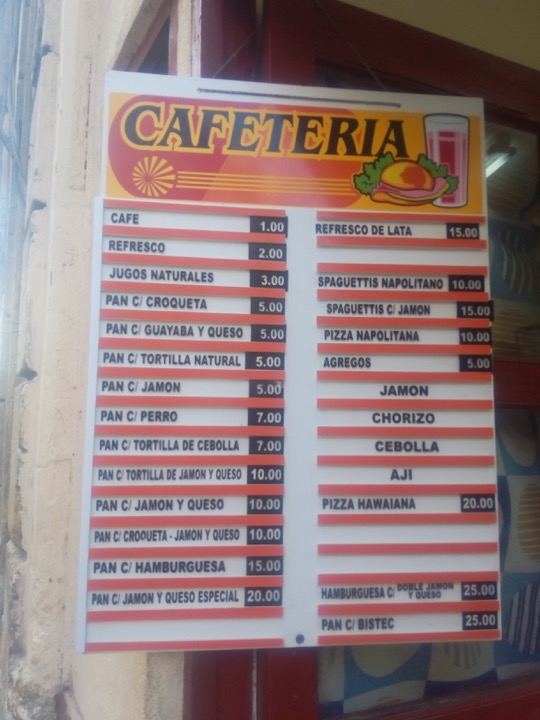 |
| A dollar goes a long way if you pay with moneda nacional |
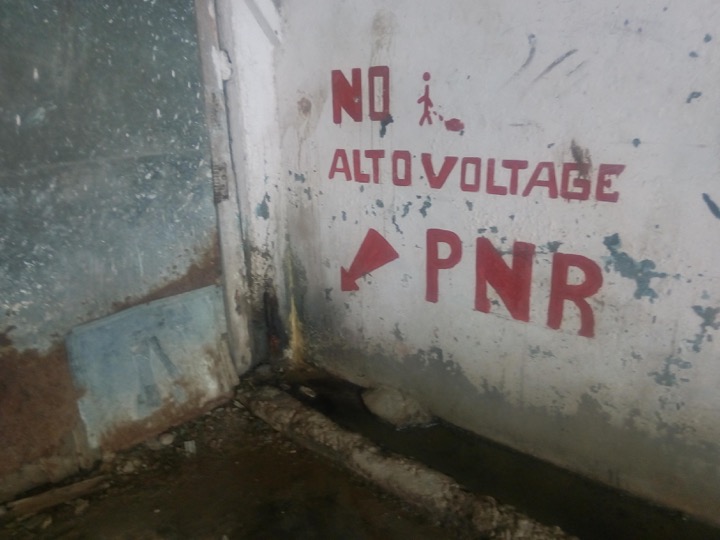 |
| "Do not pee here, high voltage" |
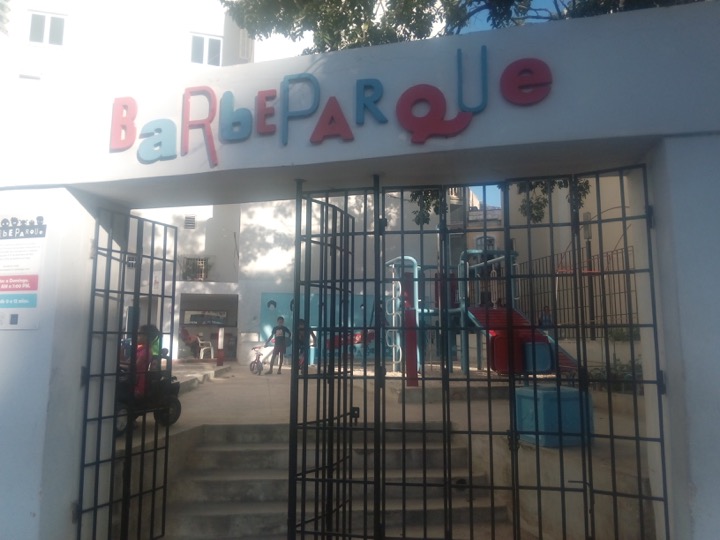 |
| One part barber shop, one part playground |
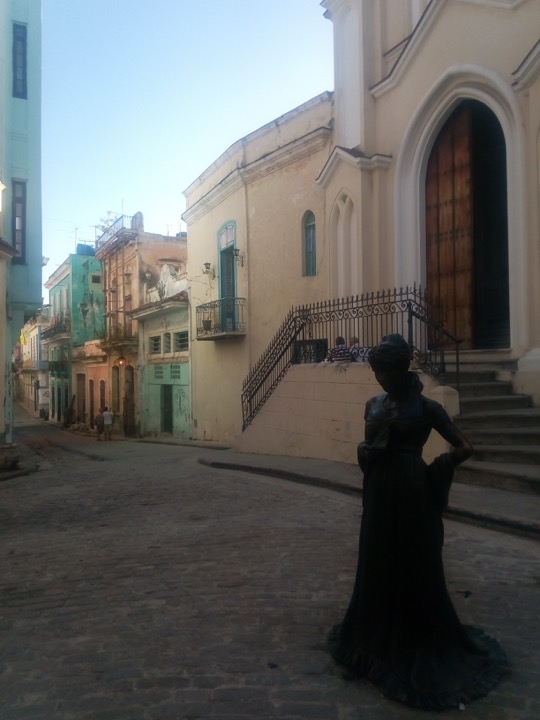 |
| Habana Vieja |
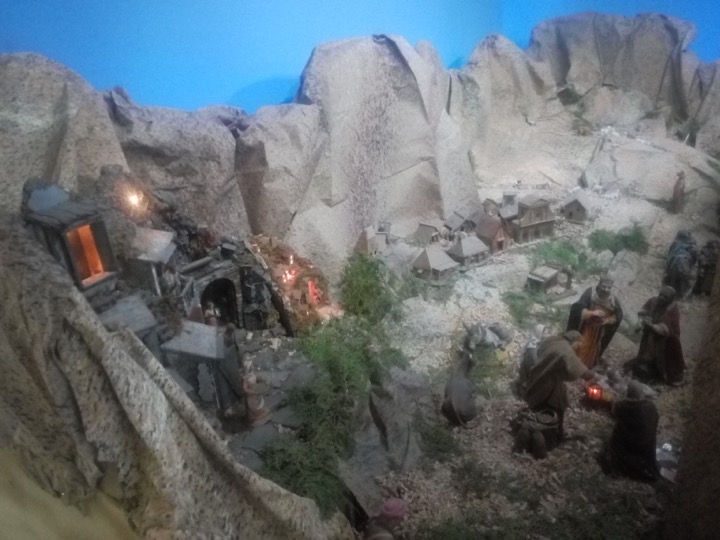 |
| Animatronic nativity scene with a cast of hundreds |
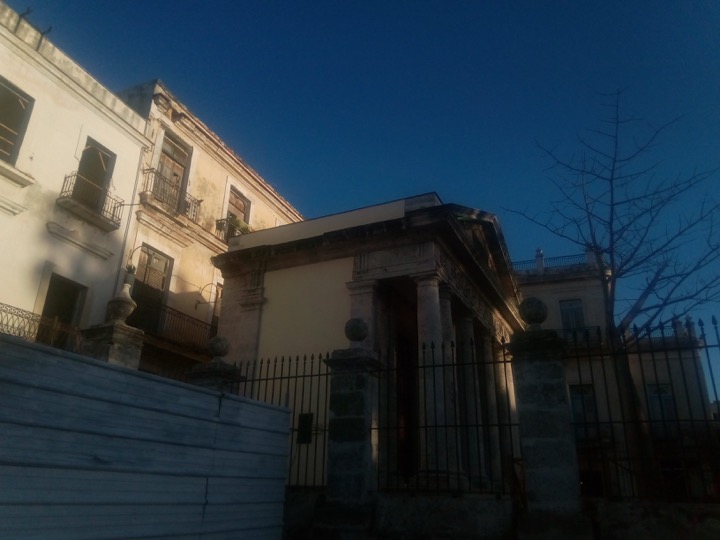 |
| Notable juxtaposition of distinct architectural styles |
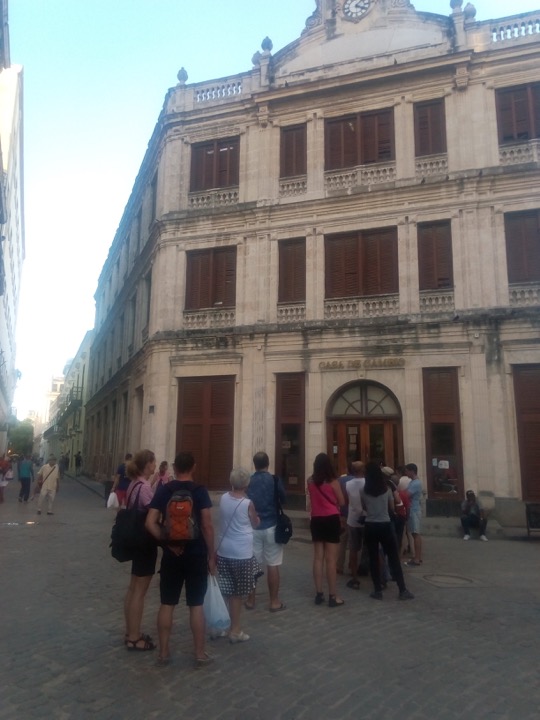 |
| The change office - getting money in Cuba is none too quick |
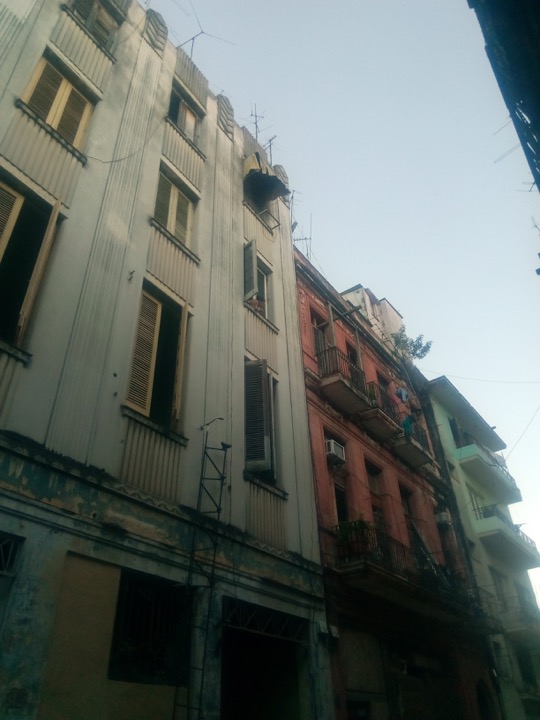 |
| 20 bike frames welded together |
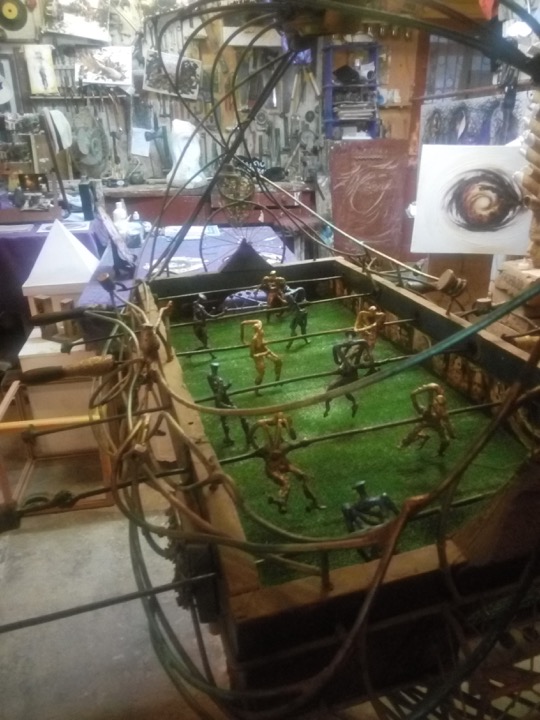 |
| A more creative take on foosball |
World's Cheapest Airport Bus?
A critical consideration when designing an airport is how to make it sufficiently inaccessible to pedestrians and public transport, such that you can bleed as much money as possible out of travelers in the first and final moments of their trip. I have long been a connoisseur of inexpensive airport access and have gone to extraordinary lengths to spend little or no money in the connection between flight and downtown. Tasmania, for instance, saw me walk six miles through the night, pursued by the harrowing cries of wild dogs.
Pisa has one of the easiest approaches. Its airport is right in the center of town, and even the most high maintenance of travelers might find themselves walking to it from their hotel, wheeled, hard-shell suitcases in tow. Panama City's is a two-hour bus ride away, but like every other city bus, the fare for this one is only a quarter. Havana wants you to believe that there exists no alternative to a 25 CUC taxi, though this fare is just shy of the monthly salary for most Cuban citizens.
But the Havana airport is a pleasant, short walk from a quiet neighborhood with cheap hotels and 30-cent pizzas, and a major highway with frequent direct buses to downtown. The fare for these buses is one peso, roughly equal to four cents. If you attempt to pay with a 1 CUC bill, the driver will either just wave you through, or exhaust his stockpile of change in a futile attempt to accommodate your absurdly high denomination bill.
Havana has roughly 10% of the number of buses it would take to satisfy the needs of its population, so you can expect to be packed with the efficiency of an orange pile. Crime against tourists is rare in Cuba because the penalties are so extreme, but when the hands reaching for your pocket could belong to any of twelve different riders, and the contents of your pockets are equal in value to two years of work, the risk can be easily justified.
As my bus sped down the dark highway, I awkwardly finagled my phone out of my pocket to check our bearing. As I did this, I came to the realization that, unlike on every other bus the world over, not a single person on board was checking his/her phone. Furthermore, as I swiped my finger across the $150 device, two dozen pairs of hungry eyes came to rest on it. Shortly after I put my phone away, one woman's fingers playfully danced around the mouth of my pocket, testing the waters. I pushed these away, but they returned for another attempt, more forceful this time. I had no space to move and held my hands firmly at my sides, doubting that I would be able to make it to the end of the line whilst retaining my possessions. At the next stop, a new wave of passengers embarked as another group began to force itself past. More and more hands shot for my pockets in the midst of the churn. I barrelled for the door, jabbing elbows into rib cages and crushing toes in a mad rush to escape.
I sucked in the warm night air, able to expand my lungs once again. I was on the side of a dark highway miles from downtown. Grabbing a second bus was far from enticing, so I was left to walk the empty highways that would eventually lead me to safety. My synthetic pants, running shoes, and backpack proclaimed the probable contents of my pockets to each lonely passerby.
Costs (US$1=1 CUC (-10% fine), CUC$1=24 Moneda Nacional)
Roundtrip flight from FLL to Havana: $130
Bus from airport to center city: 1 CMN
Rice with egg at cafeteria: 18 CMN
Shared taxi to Vinales: 12 CUC
Casa Particular (for 1 to 4 people): 20 CUC
Rice with vegetables at fancy restaurant: 2 CUC
Doctor consultation with wound dressing: 35 CUC
.5L of water at restaurant: 1.1 CUC
Cup of coffee (small): 2 CMN
Elaborate casa breakfast: 5 CUC
Lomo ahumado at diner: 30 CMN
Juice slushee at diner: 5 CMN
Mamey milkshake: 5 CMN
Omelette next to airport: 8 CMN




































